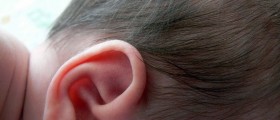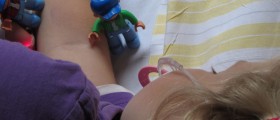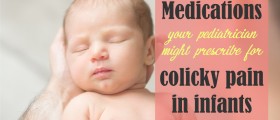
Respiratory Syncytial Virus in Infants - General Info
RSV is short for Respiratory syncytial virus. In infants this viral infection resembles common cold and it may be difficult to differentiate these two infections. The infection withdraws spontaneously and majority of patients are not prescribed any medications at all. However, some children suffer from severe form of the disease which requires supportive care. In extreme cases complications of the infection caused by Respiratory syncytial virus are so serious that the child needs to be hospitalized.
Even though this virus may occur in all the age groups it predominantly affects children under the age of two. Children under the age of six months are the most susceptible group to RSV. This can be easily explained by the fact that their lungs are not fully developed. Furthermore, this viral infection commonly affects premature infants as well as babies with congenital heart and lung conditions, babies with low birth weight, babies attending daycare, babies having school going brothers and sisters, twins, triplets etc. Exposure to cigarette smoke and family history of asthma are also risk factors for this viral infection.
Respiratory syncytial virus is the leading cause of severe respiratory tract infections in children below the age of one. General characteristics of RSV include stuffy nose, nasal discharge, and cough. Some children may develop ear infection.
Symptoms of RSV Infection in Infants
Typical symptoms of RSV infection are runny nose, increased body temperature and continuous coughing. In severe form of infection the breathing may be rapid accompanied by wheezing and contractions of the abdominal muscles. In severe lack of oxygen there are even signs of peripheral cyanosis. And finally, the infant refuses to eat and may lose weight.
Treatment for RSV Infection in Infants
Mild forms of RSV infection do not require any treatment at all. However, severe cases require hospitalization. In hospital the infant is administered many medications which take care of symptoms. The goal is to reduce fever, to bring ear infection under control and to alleviate accompanying discomforts. Particular attention is paid to infants suffering from breathing difficulties.
Proper hydration is essential since the child loses water due to fever and increased perspiration. Breastfeeding should be performed often. The infant's head is supposed to be in elevated position since this way baby breaths more easily. Nasal mucous may be loosen by saline solution and then sucked out with a bulb syringe. If the child is not hospitalized he/ she must be kept away from cigarette smoke, fumes and other potential irritants.

















Your thoughts on this
Loading...